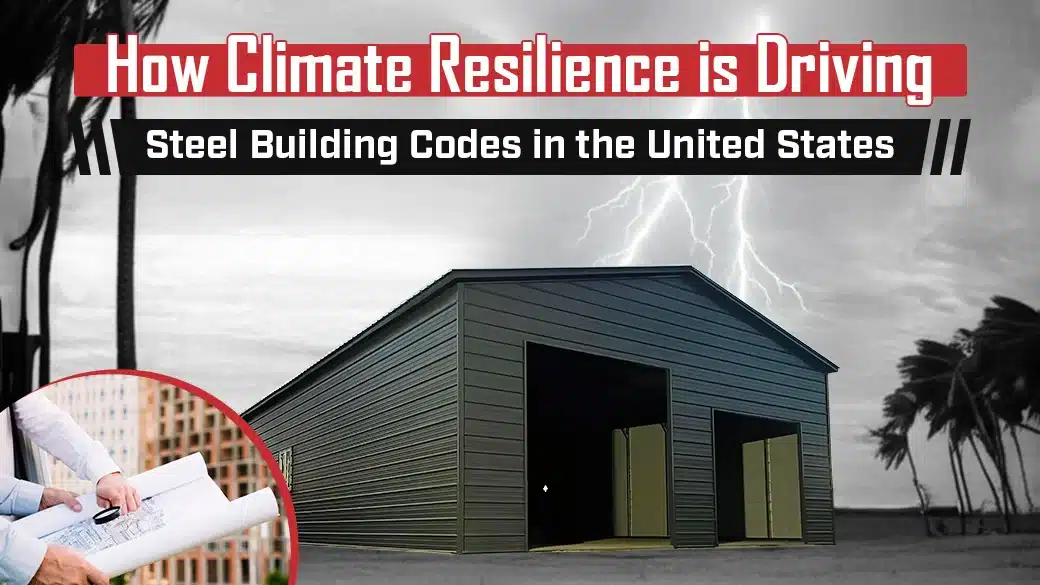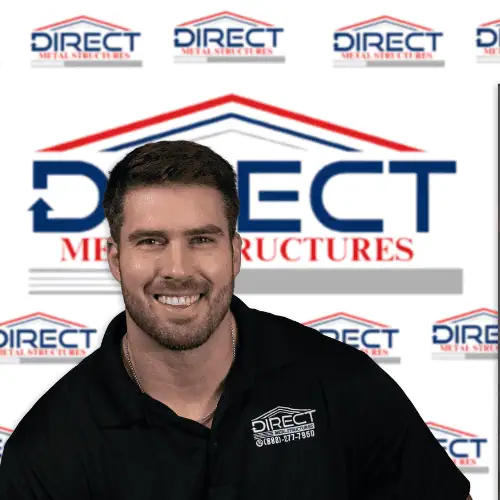Steel building codes in the United States have become more stringent in terms of laws around them and the materials used in construction, with the need for more sustainable and resilient materials keeping the current climatic changes in mind. There have been various climatic extremes in the US, especially in Tennessee, in the past. While the building codes are revised every three years, for the short-term and long-term impacts, the measures included in the construction of these buildings now require adhering to and renewing the prior certifications held by building companies.
The Steel building industry is estimated to grow to $21.03 billion by the decade's end. This implies that maintaining quality standards regarding materials used in construction and the functioning of the businesses is essential to ensure minimal environmental impacts. Even though steel is 100% renewable and therefore an excellent, sustainable investment offering extreme Durability compared to any other material, it is a win-win for everyone.
What is Climate Resilience?
As the climatic conditions of a place change over time, due to changing infrastructures, globalisation effects, developments, or other natural factors, the nature of building materials, infrastructure, or township planning to support those changes is made to be resilient, and deal with these climatic changes and stay future-proof. This is known as climate resilience in simple terms.
How Do Steel Buildings Play a Role in Climate-Resilient Infrastructure?
Steel buildings have always been the top choice when it comes to resilient as well as sustainable infrastructure. Steel is 100% renewable and long-lasting, ensuring no consumption due to repairs and replacements over a short-term period on the same projects. Once installed, they can easily be sustained for nearly half a century. Steel is also heat, water, storm, and fire-resistant, and the modern galvanized steel buildings ensure non-corrosiveness, making them the most climate-resilient infrastructure material.
The most critical factors are therefore:
- 100% Renewable Resource
Steel comes with options for scrap steel to be renewed, galvanized, and reused for high-quality constructions with supreme craftsmanship.
- Heat & Weather Resistance
Steel naturally withstands extreme weather conditions and temperatures, making it an obvious choice regarding climate resilience.
- Extreme Durability
Steel buildings are opted over any other material because they are meant to last long.
- Precision and Modularity
Steel components are prefabricated to ensure higher quality and control over the construction process and assembly of parts, an essential factor during post-disaster building.
- Fire Resistance
Steel is fire resistant, ensuring that your stored goods inside the building stay protected from any harm in natural or artificial fires.
Evolution of Steel Codes
Steel is the most sought-after material for resilient buildings and structures, so there is a higher emphasis on improving its quality and the codes that are the deciding factor.
Federal laws, agencies, and state agencies, with industry organizations like ICC- International Code Council and American Institute of Steel Construction (AISC), actively revise building codes that match the dynamic environment around us, generally every three years, and whenever required. These codes include the following-
- Wind and Load Resistance
Areas prone to hurricanes, such as the Gulf Coast or the Southeast US, have a much stricter law that needs to be followed by all local steel building enterprises. They must design buildings to resist lateral loads and forces caused by natural calamities or accumulated debris.
- Seismic Designs as a Criterion
Areas prone to frequent earthquakes require buildings that can withstand seismic waves. These places include states sensitive to earthquakes like California and Oregon. The steel buildings in these areas follow updated seismic codes, encompassing ductile connections and precisely detailed anchoring systems to absorb seismic waves and retain the building structure.
- Wildfire Protection Measures
Wildfires have become common in the Western parts of the US and require fire-resistant design mandates to be followed in all their building structures, especially in WUI zones. Steel becomes a natural choice as the construction material in areas like these.
- Flood-Resistant Standards
FEMA has introduced guidelines for elevated corrosion-resistant building constructions in flood-prone zones. All steel buildings, which are generally pre-galvanised for corrosion elimination, are also meant to follow all other procedures for the steel construction process.
Role of Policy, Regulations, and Industry Collaborations
Integrating these policies per the various geographies and climatic conditions and updating them as per the changes are being driven by collaborations between federal agencies, local regulations, state governments, and industry bodies before they come to you!
The National Institute of Building Sciences and the US Resiliency Council promote risk-free design practices that directly influence how steel structures are engineered and approved. Insurers and financiers also offer incentives for resilient construction and favorable loans for companies that meet the steel code requirements.
The Way Forward – Building a Resilient Future
The evolving codes in the US around steel building manufacturers, supplies, and enterprises have ensured that every building customized per the buyer's specifications is also very detailed and closely inspected during the initial quality check and requirements of that particular zone. This ensures that your building adheres to all local and government standards, is climate resilient, sustainable in the long run, is meant to last, and is still as stylish and beautiful as you want it to be!
Direct Metal Structures is a leading provider of steel garages in your zone, adhering to all local and government compliances, ensuring that your metal structures are climate resilient. We take pride in our craftsmanship and customizable garage options. Our expert professionals are here for you from the consultation stage to installation. You can easily find us in your area by locating us along with your city name or code, and we'll be at your service in seconds!
To know more, you can get in touch or call us at 888-277-7950




